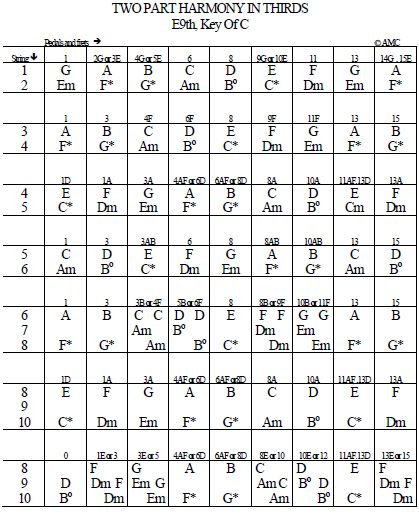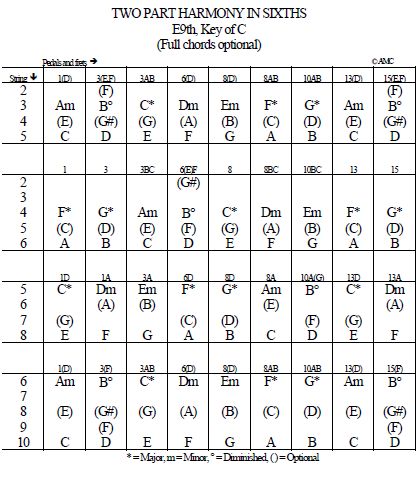download THIRDS.pdf
download SIXTHS.pdf
I'll leave it to Alex to explain the charts.
<center>


</center>
Moderator: Shoshanah Marohn


? Though the top note isn't ALWAYS the melody when playing actual two or three part harmonies.Alex Cucheran wrote:Hi Reed
It depends on whether you are playing thirds or sixths. The top note is always the melody note and the bottom is the harmony note. Therefore in thirds the melody note is the 3 note and in sixths the melody note is the 1 note.
Alex
Thanks Basil for your comments. I've been "holding my tongue" on this one, ever since I wrote my first comment. I truly am not wanting to start any diagreeable argument, but I have to agree with you (Basil). The statement about the melody note is always on top is definitely wrong, and would be very misleading to many others, if they take that as "gospel".Tell that to the Everly Brothers and Billy Vaughan, to name but a few..
I'm sorry but for the sake of posterity and general diligence, that's totally incorrect information.
Just consider what a vocal backing group does regarding harmonies.
I can't agree about the sheet music statement either, take for instance where the harmony is above the melody line, that can't possibly be written below on a separate line making it three staves with an 8va caveat ?
Having said that, your exercises are very informative for steel guitarists, provided they ignore the misleading statement regarding harmonies ALWAYS being written/played below the melody..